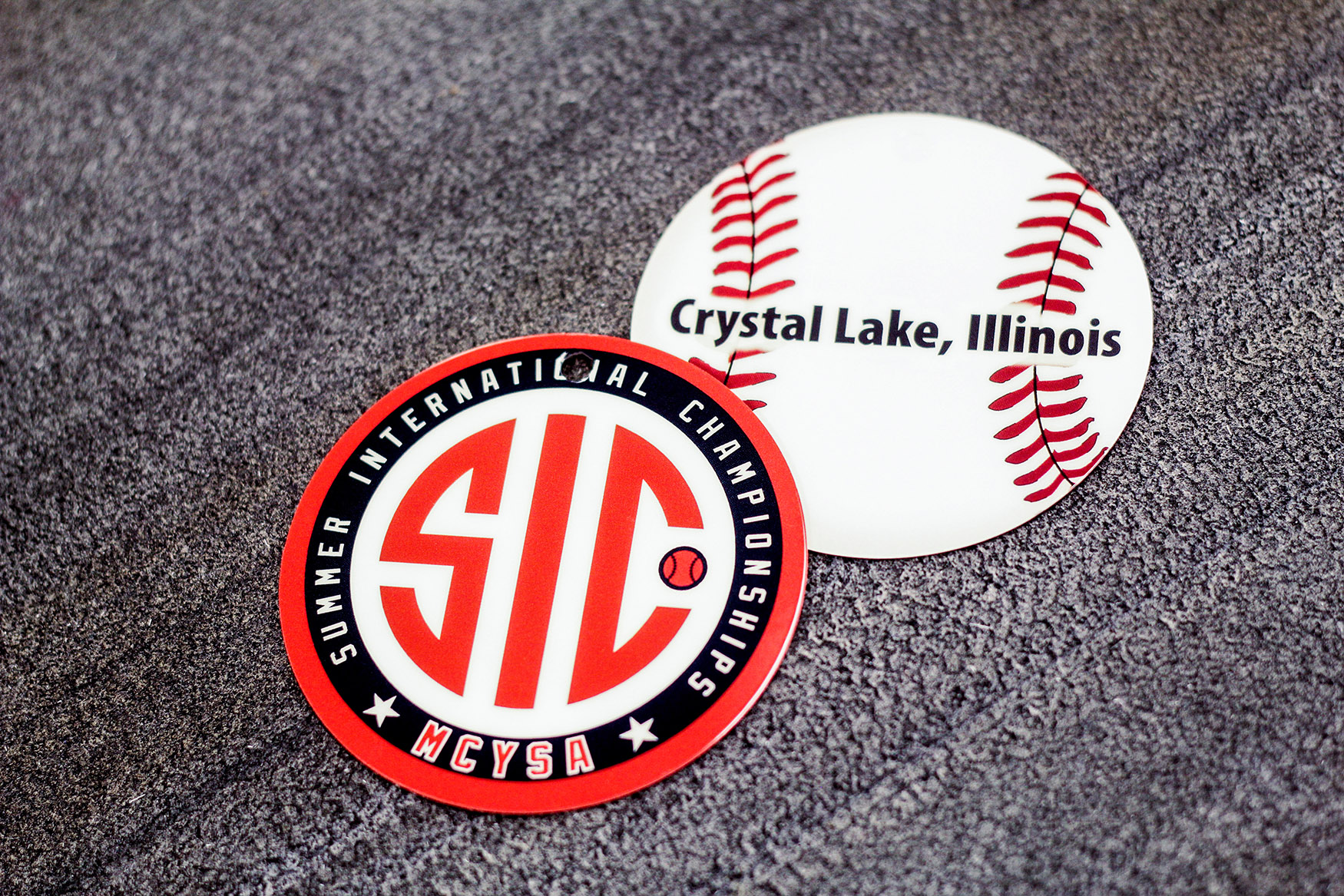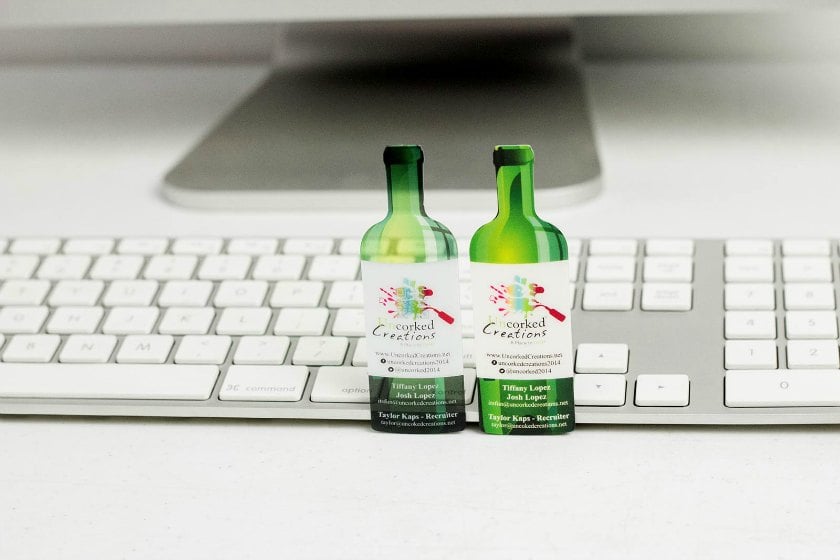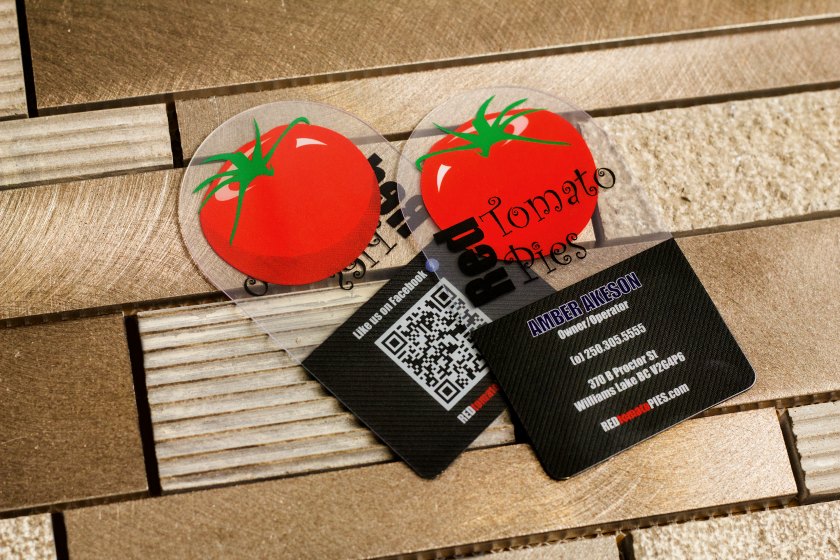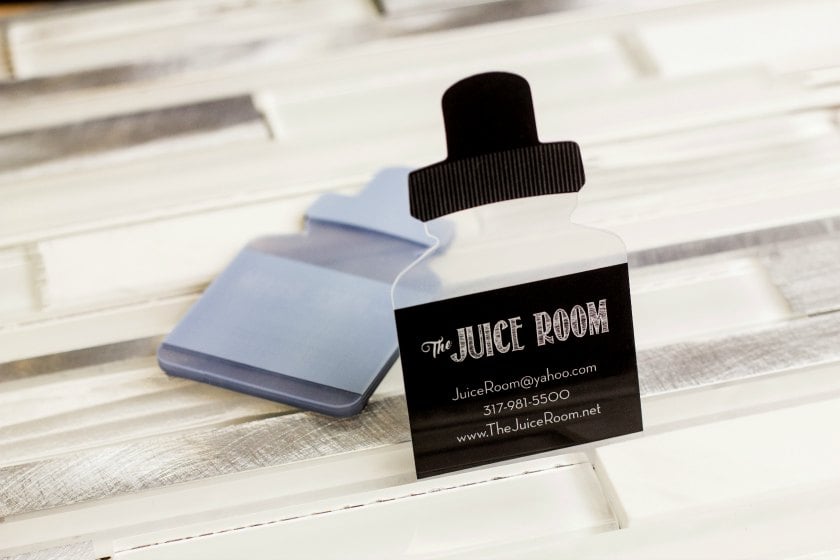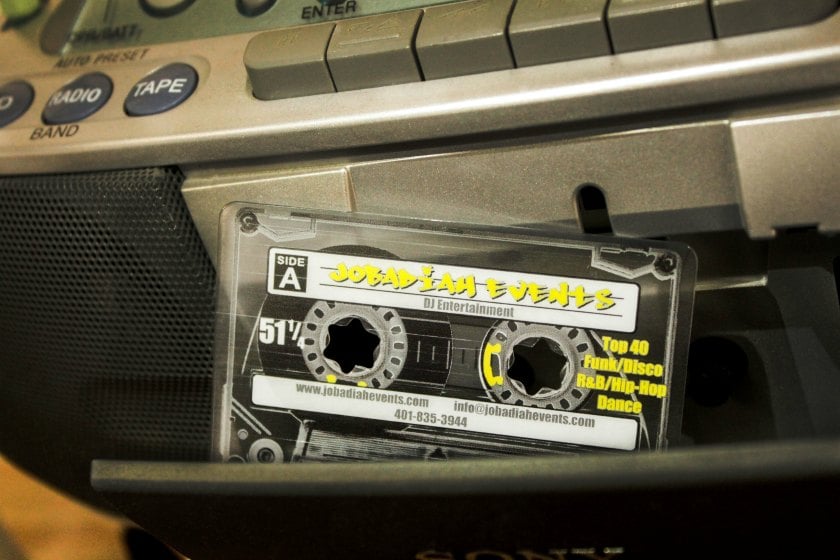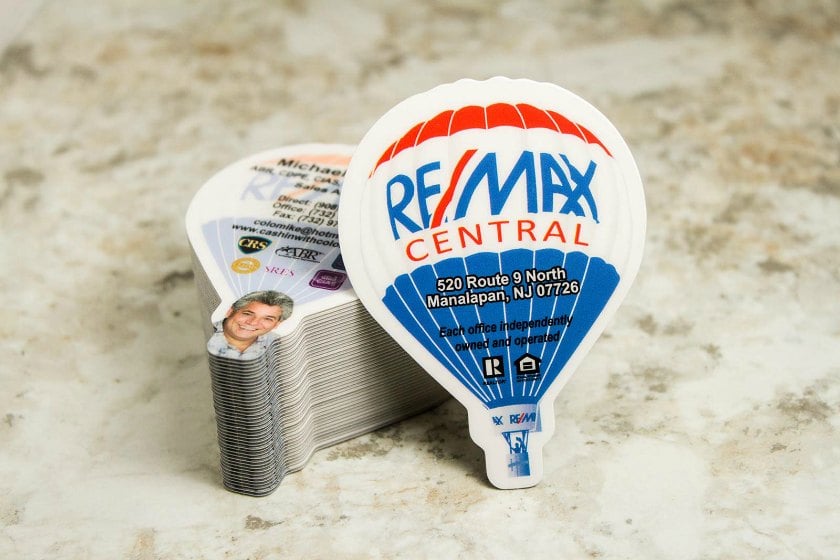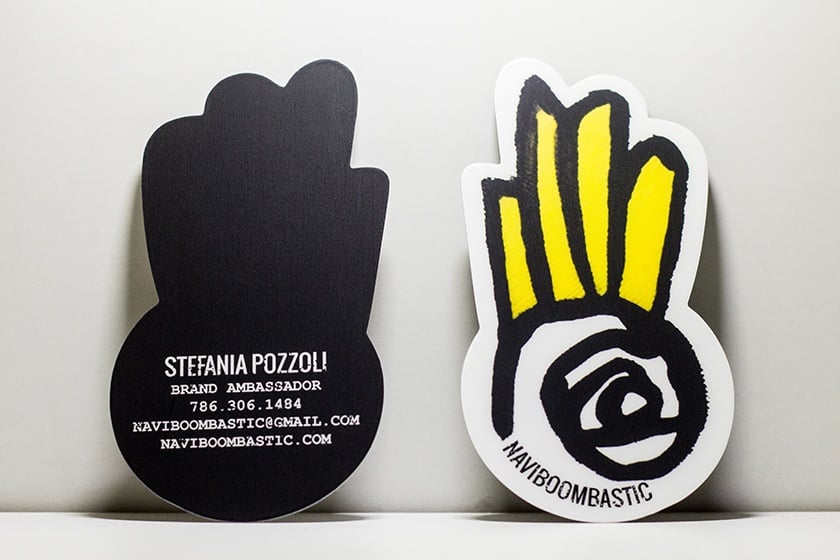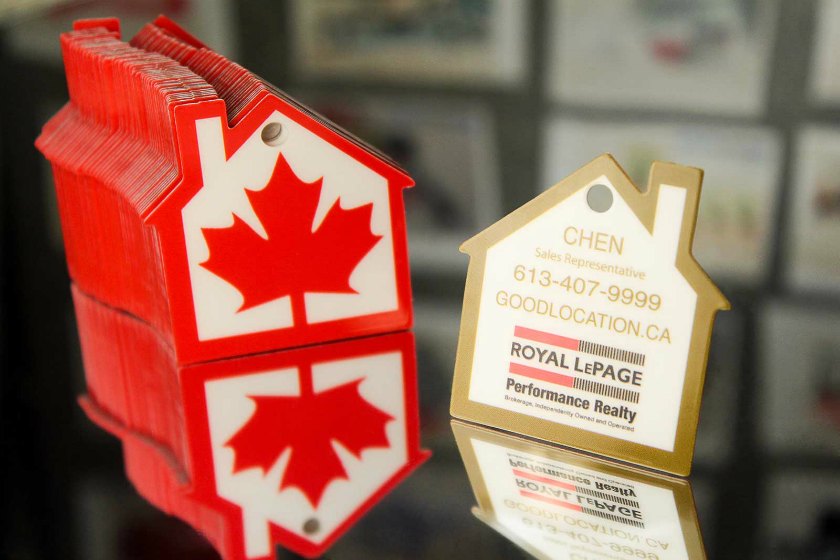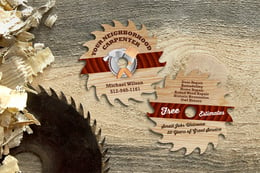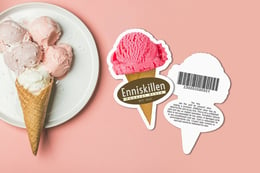Thickness
Card thickness impacts how your card feels. Thicker cards have a bit more weight to them, and usually feel sturdier and less flimsy than less thick cards, giving them a premium feel. A thicker card can help you stand out from the competition; how thick your business card is largely depends on what material its printed on. Paper business cards are thinner than plastic business cards; 14pt and 16pt are the most common business card stocks, and the thickness of those cards are about as thick as a flyer or postcard. 32pt stock would be considered an extra thick business card. Plastic business cards are usually thicker than paper business cards, and typically round out around 30 mil, or .03 inches in thickness.



